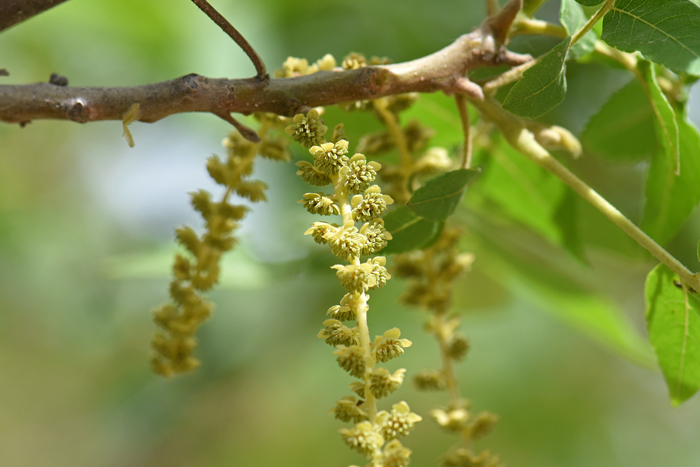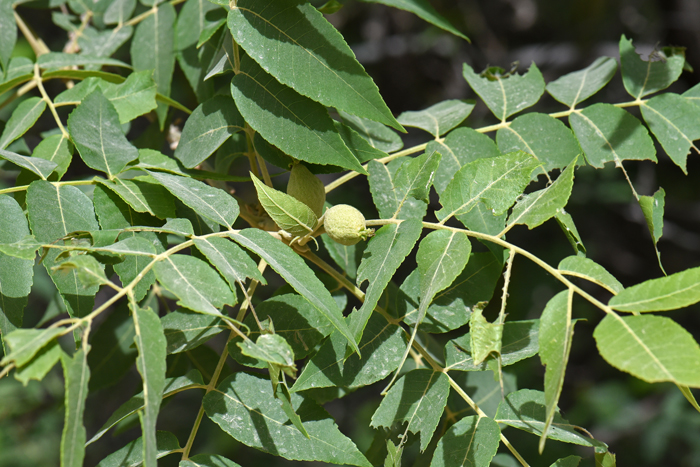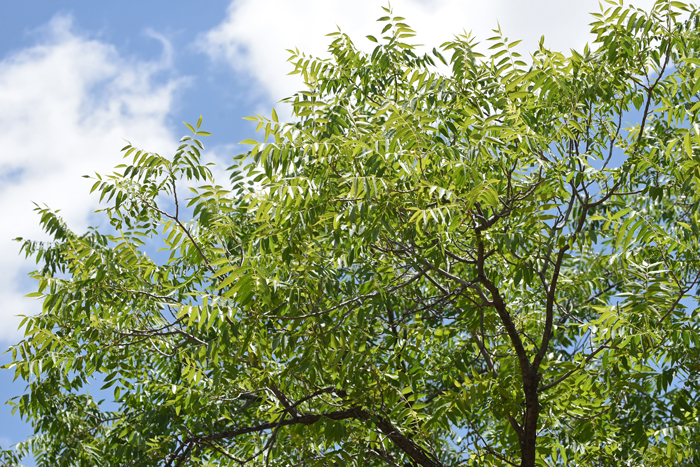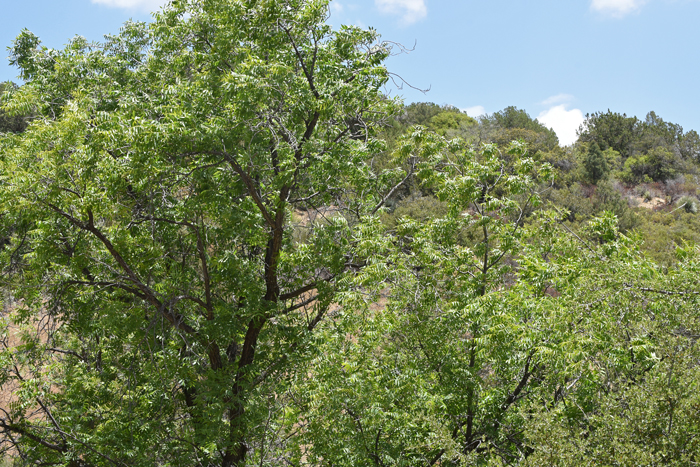Juglans major, Arizona Walnut




Scientific Name: Juglans major
Common Name: Arizona Walnut
Also Called: Arizona Black Walnut, Mountain Walnut, New Mexico Walnut, River Walnut (Spanish: Nogal
Family: Juglandaceae or Walnut Family
Synonyms: (Juglans elaeopyren, Juglans microcarpa var. major, Juglans rupestris var. major)
Status: Native
Duration: Perennial
Size: Up to 50 feet hight with a 4 foot trunk diameter but usually smaller. Mostly widely spreading branches.
Growth Form: Tree, occasionally shrubby; round-crowned in certain geographic areas; furrowed bark on trunk, twigs gray, new growth reddish-brown.
Leaves: Green; deciduous; pinnately compound; leaves large, up to 1 foot long; strong scented; 9 to 13 leaflets; large, lanceolate or ovate-lanceolate; margins serrate.
Flower Color: Green, inconspicuous; flowers long, drooping catkins; pistillate flowers solitary or very few in a cluster; fruit a large usually nearly globose or globular, hard-shelled nut enclosed in a finally dry husk.
Flowering Season: April to May
Elevation: 3,500 to 7,000 feet.
Habitat Preferences: Along desert streams commonly with Cottonwood (Populus fremontii) and Sycamore (Platanus wrightii).
Recorded Range: Arizona Walnut is found throughout the southwestern United States in riparian areas in AZ, NM, OK, TX, UT. It is also native to the same habitat types in northwest Mexico.
North America & US County Distribution Map for Juglans major.
U.S. Weed Information: No information available.
Invasive/Noxious Weed Information: No information available.
Wetland Indicator: In North America Juglans major has the following wetland designations: Arid West, FAC; Great Plains, FAC; Western Mountains, Valleys, and Coast, FACW.
FAC = Facultative, occur in wetlands and non-wetlands
FACW = Facultative Wetland, usually occur in wetlands, but may occur in non-wetlands.
Threatened/Endangered Information: No information available.
Genus Information: In North America there are 12 species and 18 accepted taxa overall for Juglans including hybrids. Worldwide, The Plant List includes 21 accepted species names and a further 14 scientific names of infraspecific rank for the genus.
In the Southwestern United States: Arizona has 1 species of Juglans, California, Texas and New Mexico each have 3 species and California has 1 additional hybrid, Nevada has 0 species and Utah has 2 species. All data is approximate and subject to taxonomic changes.
Comments: Arizona Walnut is common in southwestern United States deserts where it is found along streams commonly with Fremont Cottonwood (Populus fremontii), Goodding's Willow, Salix gooddingii and Arizona Sycamore (Platanus wrightii).
Arizona Walnut provides important habitat and food for wildlife species including squirrels, birds and other wildlife readily eat the nuts. It is believed that squirrels in the southwest eat the nuts immediately and do not cache the fruit as other squirrels are known to do. The preferred habitat for Arizona Walnut is medium to high desert riparian communities which is an important community for a multitude of breeding birds. Acorn woodpeckers, cavity nester's, use select branches and trunks of Arizona Walnut for breeding purposes. This species is not desirable for livestock browsing in southeastern Arizona riparian areas. For a comprehensive thoroughly documented review of Arizona Walnut, Juglans major see the USDA USFS Fire Effects Information System, or FEIS.
According to the Native Plant Information Network, although in limited supply, the wood of this Walnut tree is used for furniture and gun stocks. The tree produces small walnuts which are known as "nogales".
Juglans major has been used for food, dyes and other purposes southwestern United States indigenous peoples.
See complete listing of ethno-botanical uses at Native American Ethnobotany, University of Michigan, Dearborn.

